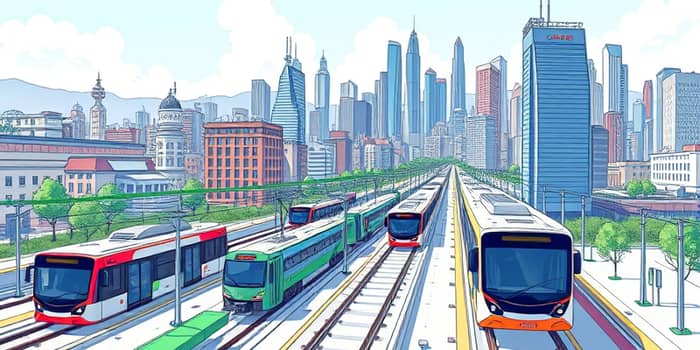
As our world faces mounting environmental challenges and urbanization pressures, the way we move people and goods must undergo a profound transformation. Collaboration between public and private sectors and visionary policymaking will define the coming decade of sustainable transport.
The global transportation industry is projected to be between $7.52T and $9.77T in 2025, reflecting its immense scale and influence on economic growth. As cities expand and supply chains stretch across continents, demand for efficient, low-emission mobility solutions continues to surge.
The sustainable infrastructure market is forecast to grow at a CAGR of around 21.34% from 2025 to 2034, driven by investments in electrification, green fuels, and smart technologies. Yet even with ambitious plans, there remains an investment gap of $10 trillion by 2040 against the $50 trillion needed for resilient global transport.
Bridging this gap will require new funding models, creative policy instruments, and a unified vision. In many regions, governments have already pledged a significant share of their 2025 infrastructure budgets to transport, indicating momentum toward more sustainable networks.
Investment patterns vary dramatically across regions, reflecting differing priorities and economic contexts. In the Asia-Pacific, the massive $2.2 trillion allocation underscores the strategic focus on rail and urban transit systems to support dense populations.
Institutional investors are mobilizing more than $800 billion, while private sectors aim to allocate $850 billion by 2025. Tax incentives, co-financing schemes, and initiatives like the EU’s InvestEU program (€25B) demonstrate how policy frameworks can unlock capital.
Decarbonization is no longer optional—it's an urgent mandate. In 2024, electrified transport investments globally reached $757.4B, yet remain insufficient to meet net-zero targets. Collaboration between governments, corporations, and communities is critical to accelerate this shift.
Policies such as the EU’s Sustainable Transport Investment Plan require €100B to achieve 2035 fuel goals, with immediate mobilization of €2.9B through 2027 for synthetic aviation and maritime fuels. These short-term milestones lay the groundwork for systemic change.
National strategies increasingly emphasize urban resilience, integrating zoning laws, congestion pricing, and renewable energy mandates. By aligning financial incentives with environmental targets, stakeholders can ensure that every dollar invested yields both economic and ecological returns.
Technological breakthroughs are rewriting the rules of mobility. Shared mobility, on-demand ride services, and micromobility options like e-bikes and cargo drones are reducing reliance on private vehicles. At the same time, autonomous shuttles and urban air taxis promise seamless, low-carbon travel for millions.
Green logistics is another frontier: electric trucks, hydrogen-powered freight fleets, and biofuel blends are revolutionizing last-mile delivery. Companies leverage AI and IoT platforms to optimize routes, cut emissions, and improve reliability, while blockchain enhances transparency in supply chains.
Digitalization and connectivity underpin these innovations, creating a mesh of smart infrastructure that supports real-time decision-making and dynamic resource allocation. As costs fall and user acceptance grows, these technologies will soon become the industry standard.
Despite promising trends, formidable obstacles remain. Market fragmentation, regulatory inconsistencies, and supply chain constraints can stall progress. Addressing these challenges demands coordinated action at every level, from local municipalities to international bodies.
Yet several accelerators can tip the balance. Clear policy roadmaps, stable regulations, and ESG pressures from investors are galvanizing companies to set ambitious decarbonization targets. Urbanization and public health concerns further drive modal shifts toward cleaner transport.
By 2030, we envision a transport ecosystem that is fully interconnected, automated, and sustainable. Electric and hydrogen vehicles, powered by renewables, will dominate both passenger and freight networks. Digital platforms will seamlessly integrate multimodal journeys, optimizing efficiency and minimizing environmental impact.
Circular economy principles will guide material sourcing and infrastructure development, ensuring that every resource is reused or recycled. As smart cities evolve, mobility will be democratized—accessible to all, with no social or geographic barriers. This new paradigm will foster resilient communities and sustainable economic growth.
The journey ahead demands unwavering commitment, creative financing, and a steadfast belief in our collective potential. By aligning our ambitions—policy, industry, and citizenry—we can build a future where sustainable mobility unlocks prosperity, health, and equity for generations to come.
References





